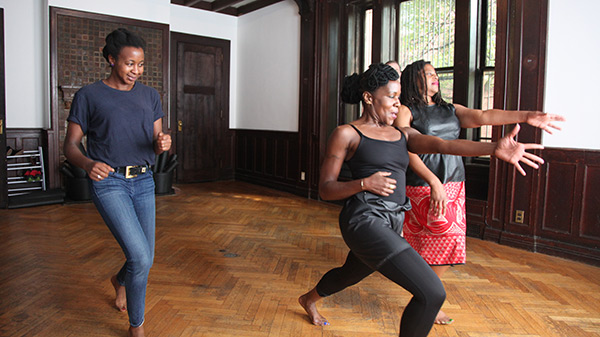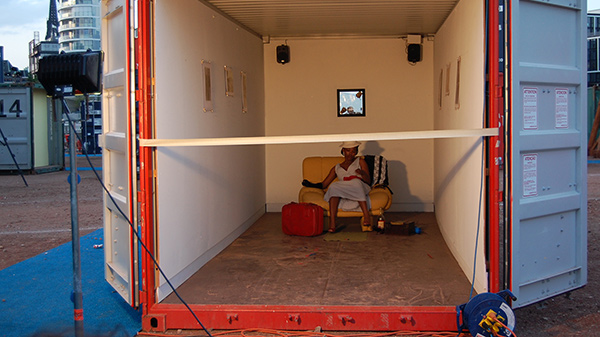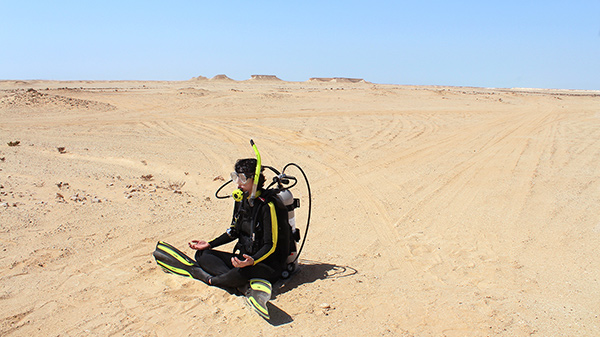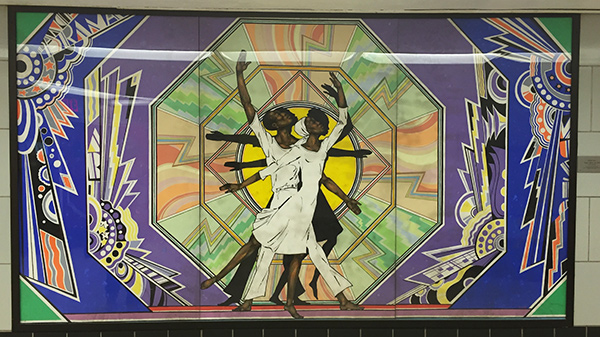
Schedule
Sections Overview
DAY ONE I. A CURRICULUM’S CONTENTS | CONVERSATION: THE UNIVERSITY AS INSTITUTION | II. DEBT AND WAGES
DAY TWO III. THE GEOGRAPHY OF LEARNING | IV. THE ART OF PEDAGOGY | V. THE STATE OF EDUCATION
SECTION I
A Curriculum’s Contents
Within an infinite field of possible studies, any given curriculum is but a partial and subjective selection of information. Presentations in this section shed light on content that tends to be excluded and the politics behind the selection process.

Simone Leigh’s “Free People’s Medical Clinic,” part of Funk, God, Jazz, and Medicine: Black Radical Brooklyn. Photo by Shulamit Seidler-Feller, 2015
CONVERSATION
The University
as Institution
A complicated political economy is part and parcel of any institution of higher education. As universities expand globally, how does this political economy operate and how does it impact the quality or purpose of education?

Gulf Labor intervention at La Biennale di Venezia 2015. Photo by Gulf Labor and G.U.L.F. (Global Ultra Luxury Faction), 2015
SECTION II
Debt and Wages
College tuition is rising so drastically, many students take out expensive loans in order to stay in school. At the same time, adjunct professors and university employees such as cafeteria workers and security guards often earn less than a living wage. This section invites students, employees, and activists to address the economic inequalities of higher education.
- Sarah Kendzior, Moderator
- Emily Barnett
- The Debt Collective
- MFA No MFA

Part-time faculty and members of the ACT-UAW rally outside The New School’s University Center. Photo by Annelise McGough, courtesy The New School Free Press, 2015
SECTION III
The Geography
of Learning
Speakers in this section explore the way learning can be site specific. Rather than assume that knowledge systems are the same across the world, they focus on geographic influence and how information is presented differently from location to location.

“Qgaga-Lola Amira” performance, Gugulective, 2009.
SECTION IV
The Art of Pedagogy
The artists in this section aim to engage their audiences in experiential learning activities. Their presentations consider the differences and similarities between their artworks and traditional forms of pedagogy.
- Jennifer A. Scott, Moderator
- Pedro Lasch
- Hope Ginsburg
- Luis Camnitzer

Breathing on Land: Zekreet, Qatar III, Hope Ginsburg, 2015.
SECTION V
The State of Education
This section focuses on pertinent issues effecting pre-K through 12 education in the United States. It concludes with a conversation in which the speakers discuss topics such as charter schools, school safety, online classes, funding, and testing through their particular area of expertise.

Eldzior Cortor’s Dance, Music, Art (1976) hangs in the hallway of Boys and Girls High School Campus. Photo by Henry Murphy, 2015
DAY ONE I. A CURRICULUM’S CONTENTS | CONVERSATION: THE UNIVERSITY AS INSTITUTION | II. DEBT AND WAGES
DAY TWO III. THE GEOGRAPHY OF LEARNING | IV. THE ART OF PEDAGOGY | V. THE STATE OF EDUCATION
